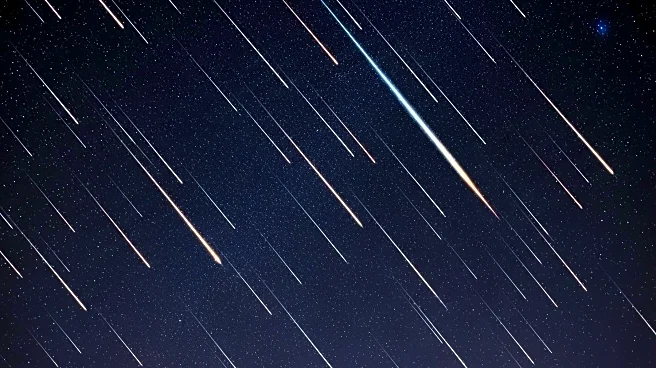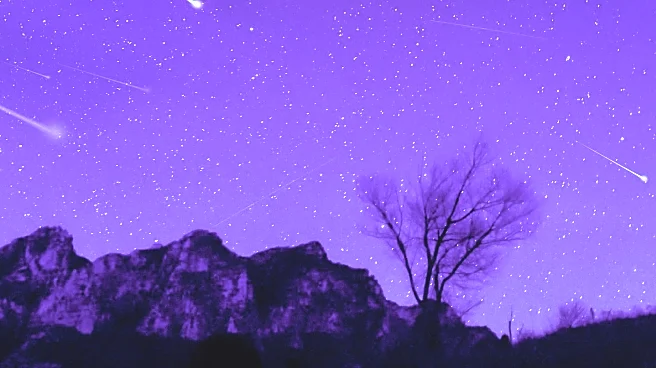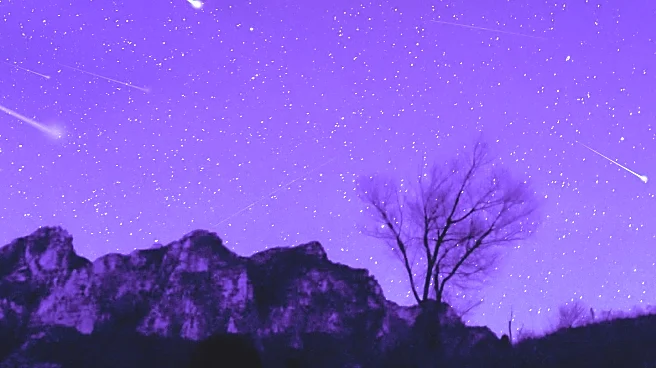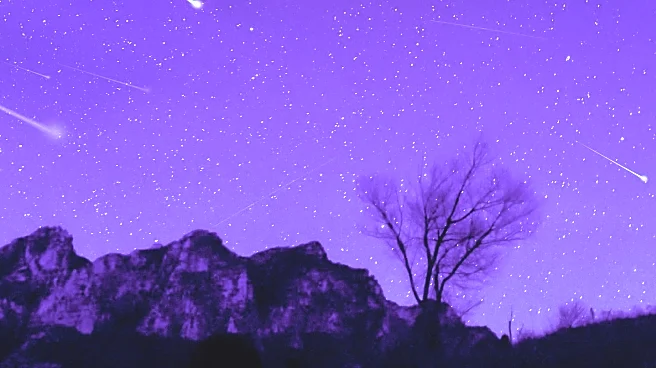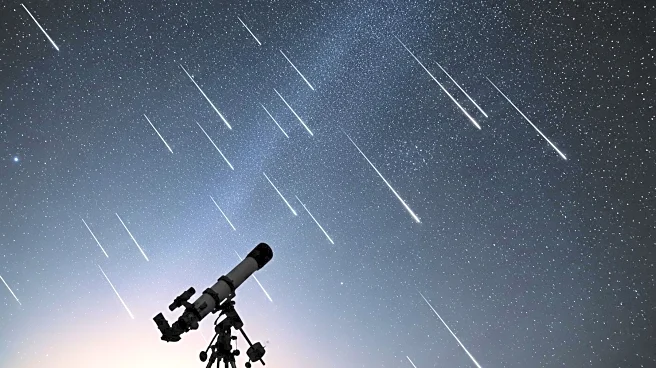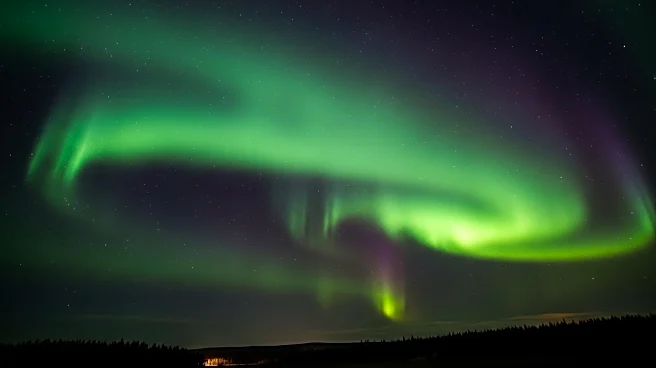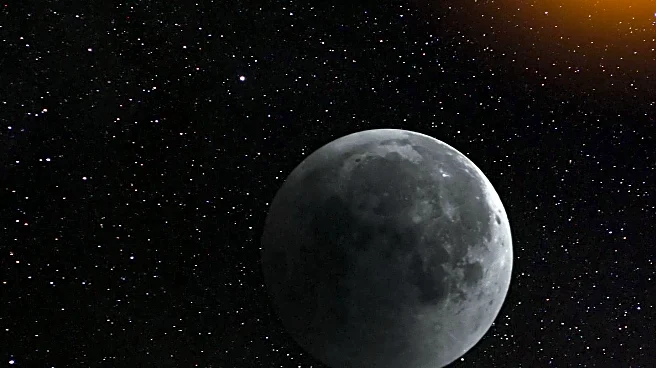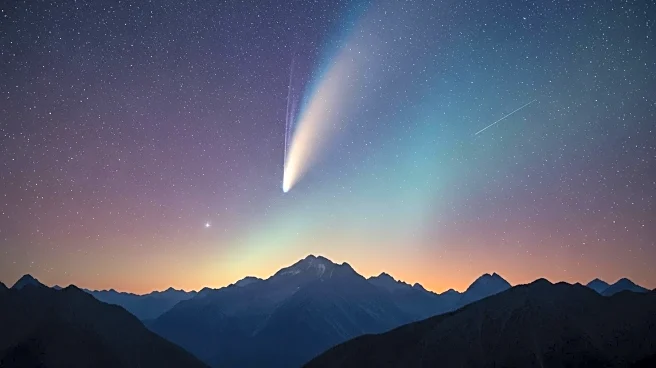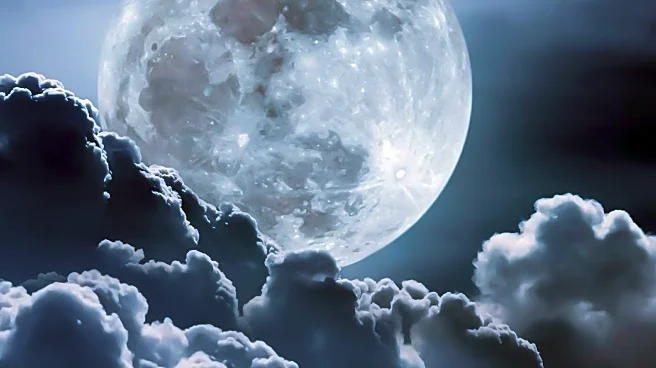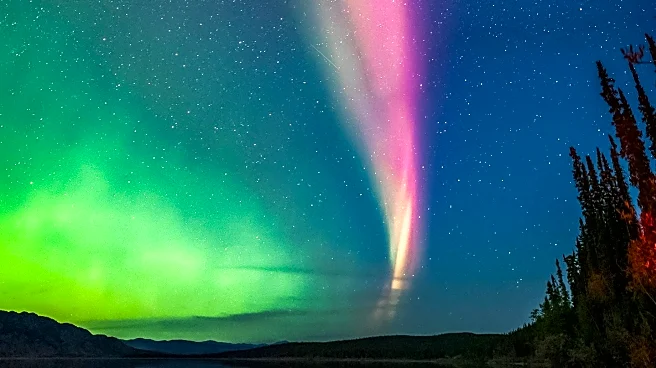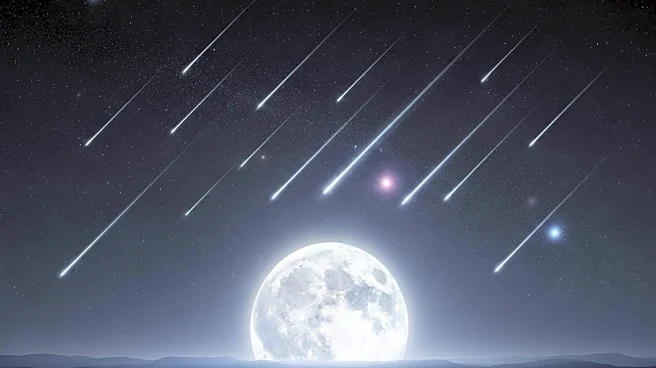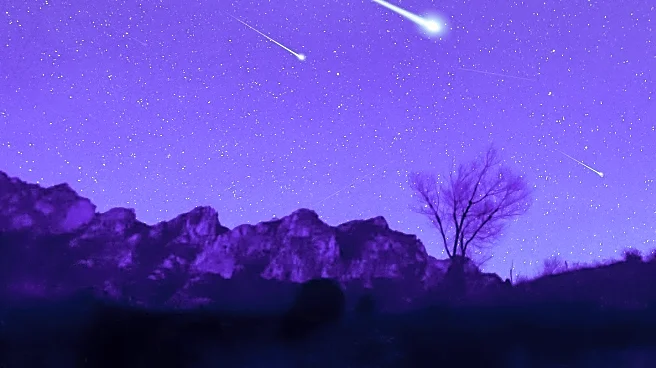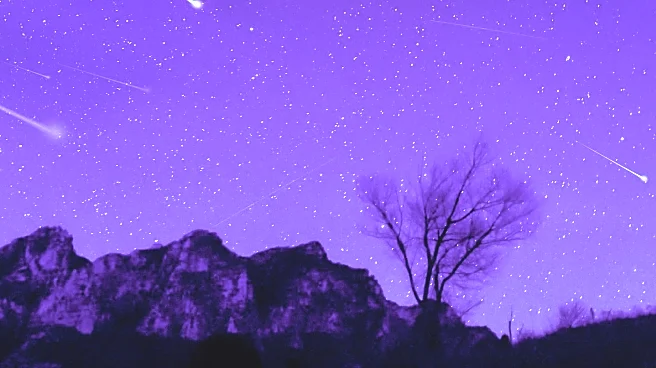What is the story about?
What's Happening?
October will feature two major meteor showers, the Draconids and the Orionids, offering skywatchers a chance to witness celestial displays. The Draconids are expected to peak on October 8, with the best viewing time being after nightfall. The Orionids, originating from Halley's Comet, will peak on October 21, with optimal viewing before midnight. Both showers are visible without telescopes, though the bright super full moon may hinder visibility of the Draconids. The Orionids are known for their speed and brightness, potentially producing up to 20 meteors per hour.
Why It's Important?
Meteor showers like the Draconids and Orionids provide an accessible way for the public to engage with astronomy, fostering interest in space science. These events are significant for educational purposes, offering a practical demonstration of Earth's interaction with comet debris. The showers also highlight the dynamic nature of our solar system and the ongoing influence of comets on Earth's atmosphere. For amateur astronomers and enthusiasts, these meteor showers present an opportunity to observe and document celestial phenomena.
What's Next?
As the Draconids and Orionids continue through October, skywatchers are encouraged to find dark, open areas away from city lights for the best viewing experience. The use of astronomy apps can aid in locating the constellations associated with each shower. The Orionids, with their potential for bright fireballs, may offer a more spectacular display later in the month. Continued observation and reporting by amateur astronomers will contribute to the broader understanding of these meteor showers.
AI Generated Content
Do you find this article useful?
